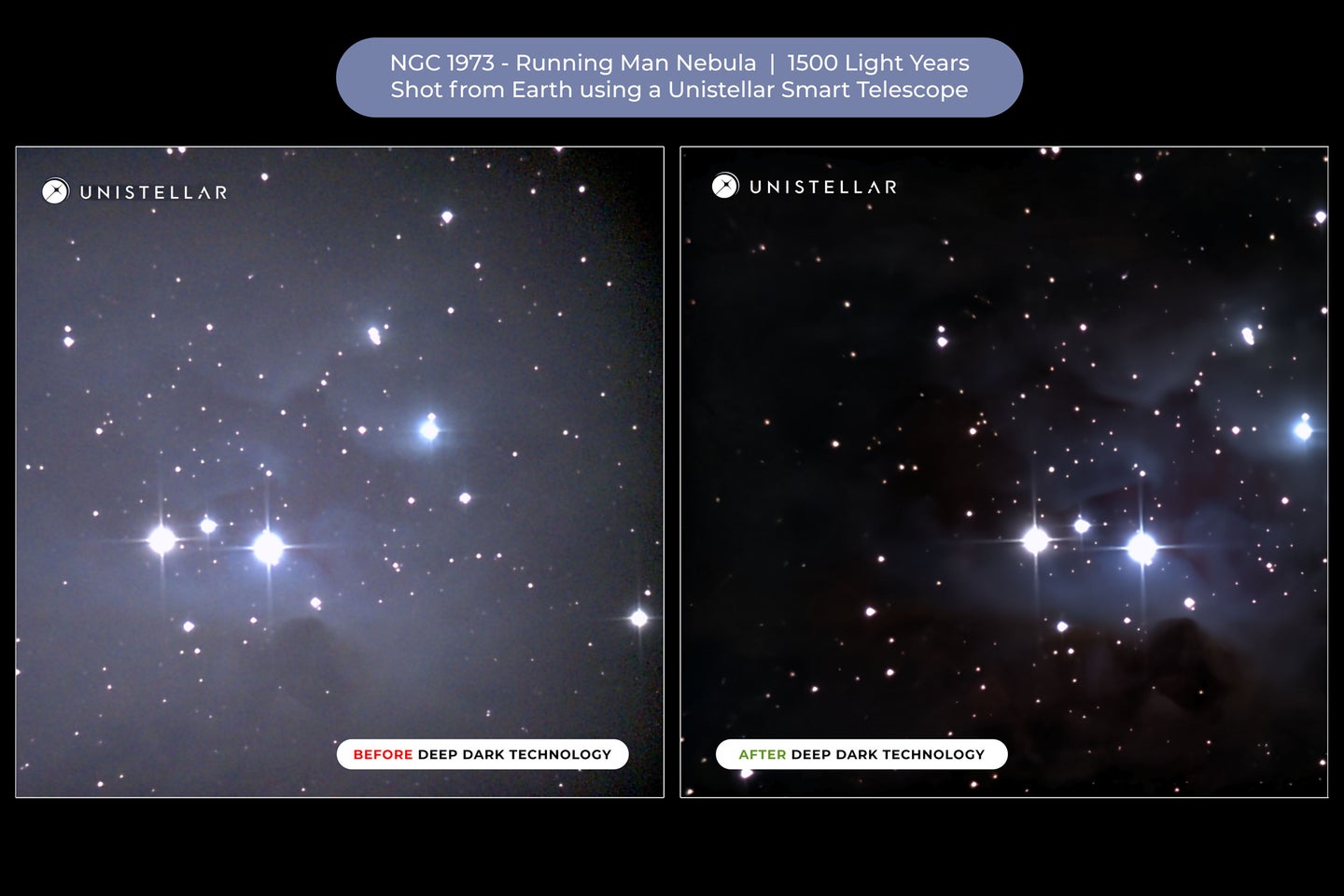Unistellar’s Deep Dark Technology eliminates light pollution
The new feature will filter out light pollution and noise to provide a high-contrast, clear view of celestial objects.

Traditionally, in order to get the best view while stargazing, you needed to be in a location with very minimal light pollution. But that meant that those in cities didn’t get the same opportunity to gaze at the night sky as those in rural locations. And according to a recent international study, light pollution is increasing by up to 10 percent every year, making it even more difficult to see the stars. Unistellar—the leading producer of high-end, consumer-focused smart telescopes—is offering a solution with its newly released Deep Dark Technology. The company released a telescope (the eQuinox 2) at the start of the year that promised to do the same, but now its light pollution removal tool will be available on both of its telescopes.

What is Deep Dark Technology?
Unistellar’s Deep Dark Technology is a method of filtering out noise and light pollution. It is integrated into the telescopes and automatically adjusts the image to provide you with a clear view, even if you are in the heart of New York or Las Vegas. It promises to produce an image with a “black background as intense as the depth of space, revealing the very faintest celestial objects with impressive clarity.” This happens in real-time so that as you look through the telescope or look at the sky via your mobile device, you’ll be seeing the filtered view without any pause.

How does the technology work?
This new technology relies on algorithms and images captured by the Unistellar community. It analyzes images taken by the community, with Unistellar’s exclusive algorithms automatically detecting the light signal from celestial bodies and distinguishing it from noise and light pollution. It even breaks it down into individual pieces of an image to determine which areas are affected by light pollution in order to remove it. The process results in a higher contrast, sharper, and richer image with clearer stars and well-defined cosmic objects.
In order to take advantage of this new feature, those with Unistellar telescopes—either the eQuinox 2 or eVscope 2—will need to update their mobile app to version 2.4. Then, the next time you pair your telescope, it will automatically update the firmware to provide access to the Deep Dark Technology algorithms, which are embedded into the telescopes. If you are just purchasing a telescope, you will be able to take advantage of this feature right out of the box.
